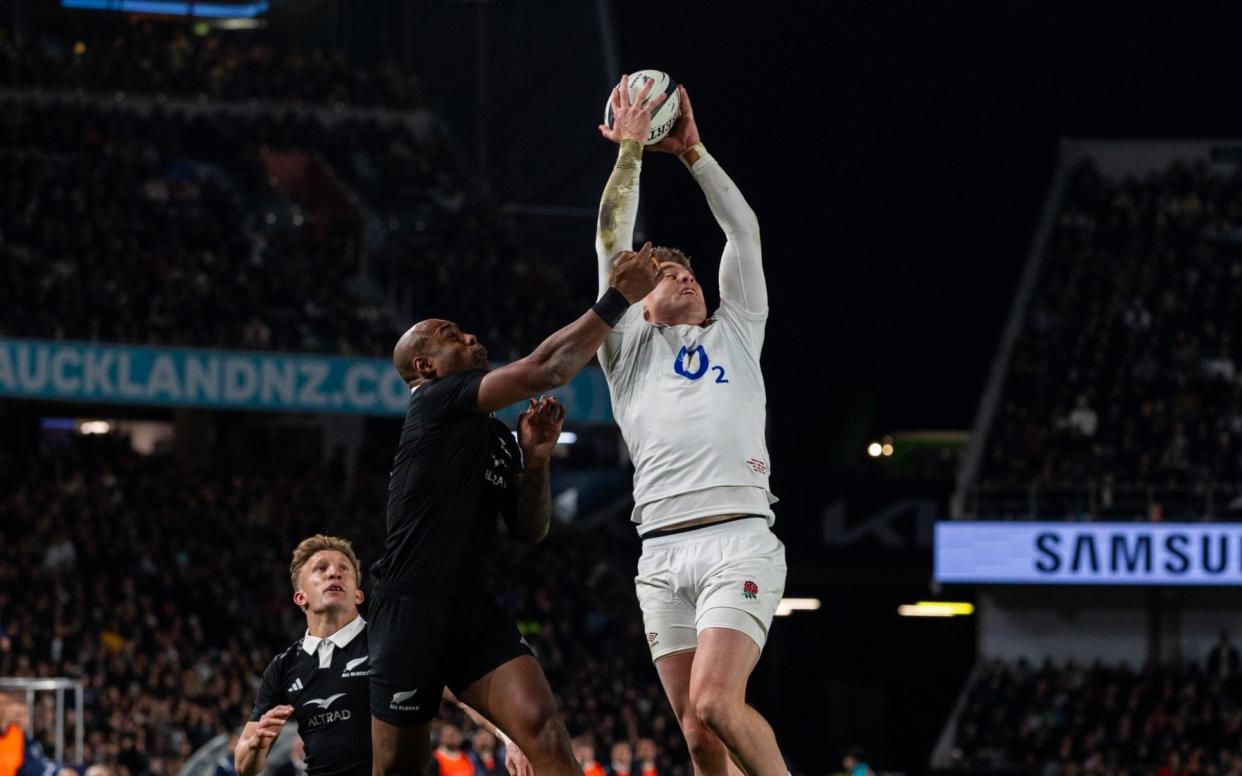
Among all the possible actions in rugby union, kicking the ball in a strong attacking position is among the most likely to elicit a groan from a team’s supporters.
Between his two drop goals in Durban, Ciarán Frawley’s deft grubber, which caused Sacha Feinberg-Mngomezulu to concede a line-out, was a courageous and highly influential piece of play. Initially, though, it would have made Ireland fans nervous and even frustrated.
Hours earlier, England had bagged both of their tries at Eden Park from Marcus Smith kick-passes. The fly-half refines this skill diligently. Watch him during a warm-up and he will strike several balls to team-mates on the wing. In the second Test, Smith’s practice paid off.
Scan and strike
The first try begins way back at the restart that follows Mark Tele’a’s finish. England were admirably resilient during the series, reacting well to setbacks. Ben Earl, George Martin and Sam Underhill all rush Damian McKenzie’s clearance…
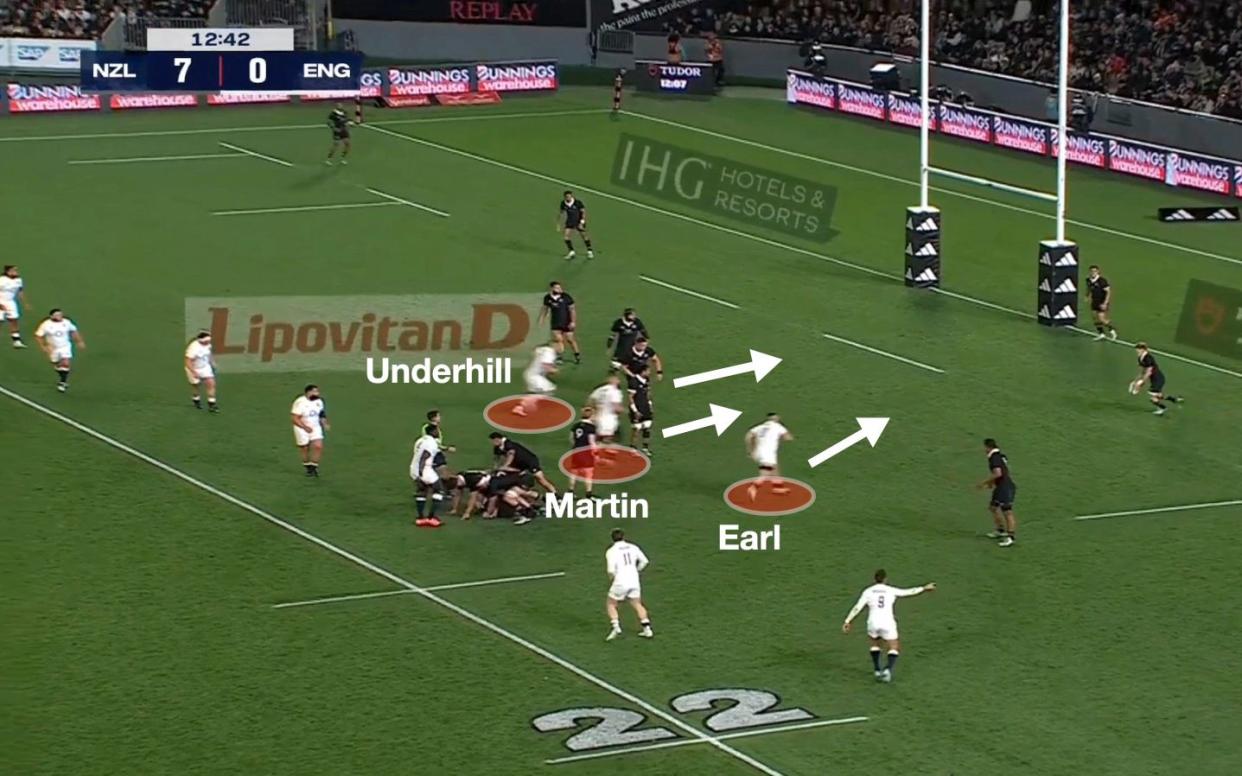
…and England earn a line-out between the All Blacks’ 10-metre line and their 22. They call a three-man line-out, which leaves Earl, both props and Chandler Cunningham-South in midfield. Note the position of Immanuel Feyi-Waboso as Smith feeds Cunningham-South:
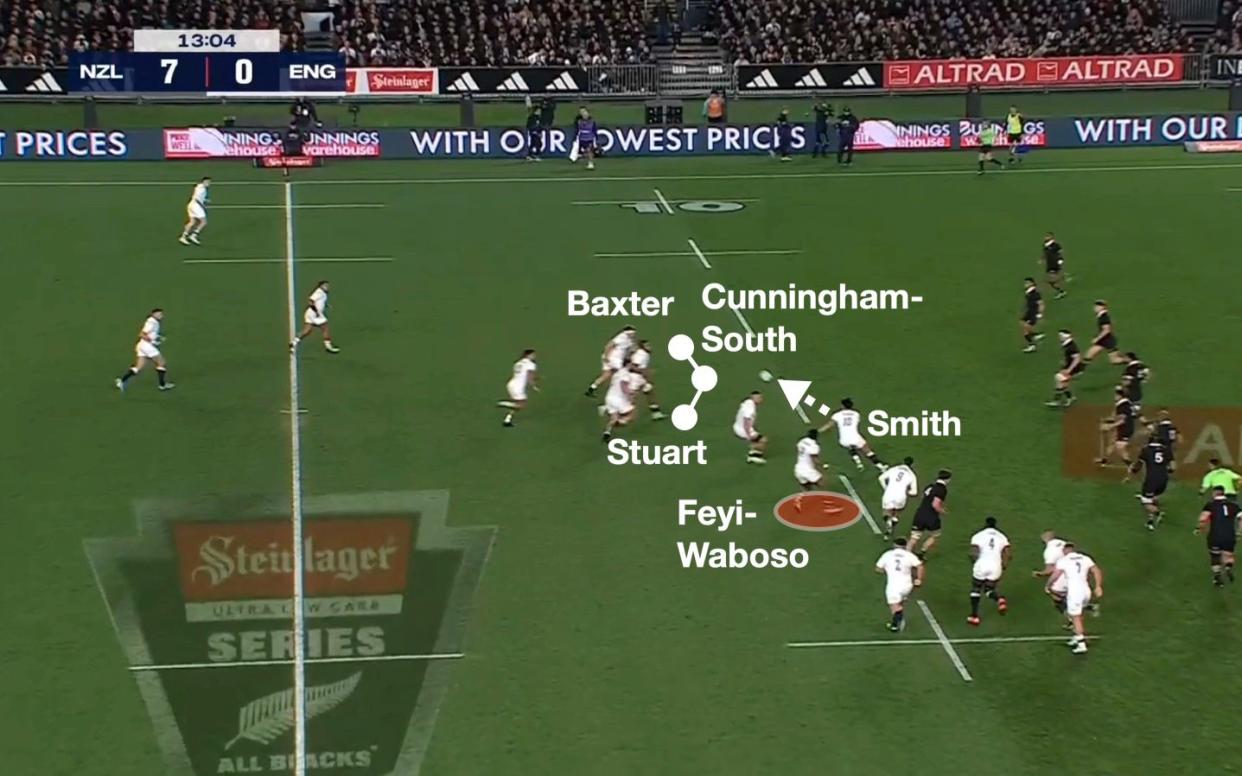
A phase later, England come around the corner with Henry Slade at first-receiver and Freddie Steward linking with Tommy Freeman. George Martin, who had lifted Maro Itoje at the initial line-out, has stayed on this near side. But that is only a decoy, it seems:
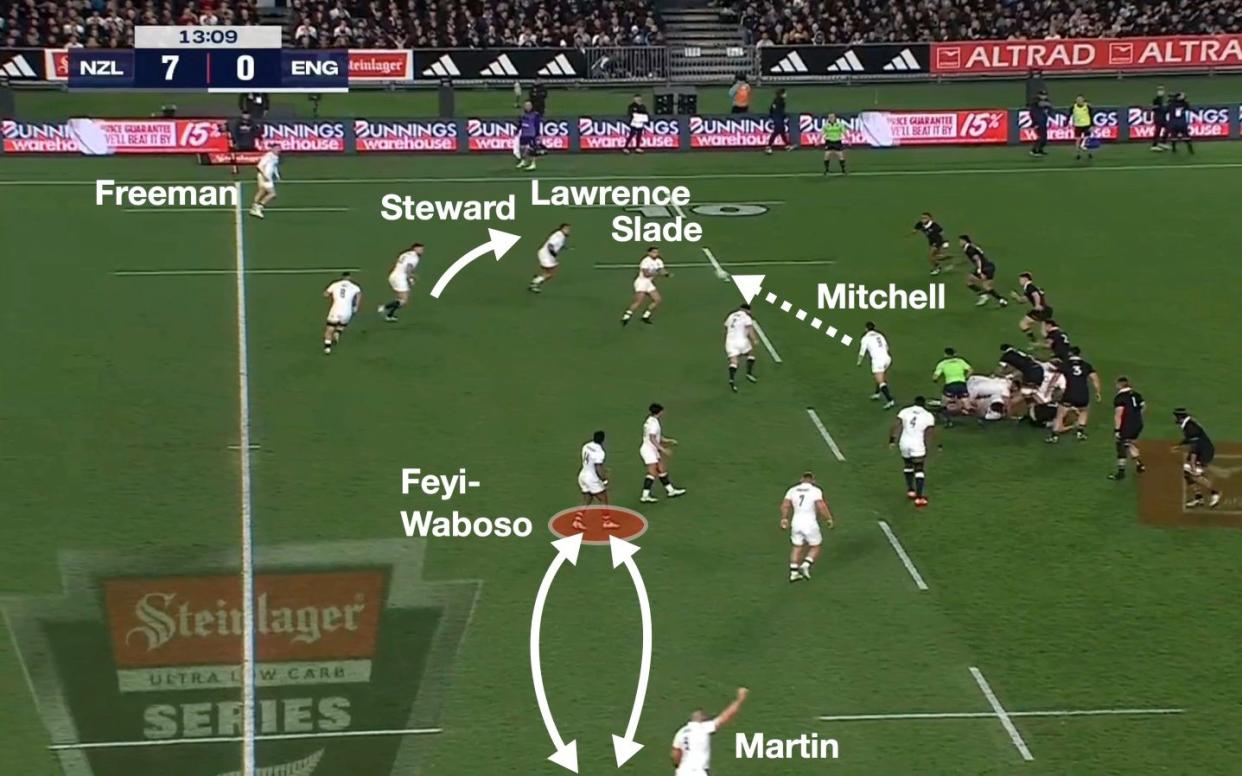
Fin Baxter carries as England come infield from a wide ruck. Watch Smith scanning in the bottom left-hand corner of the screen. Feyi-Waboso has clearly swapped places with Martin:
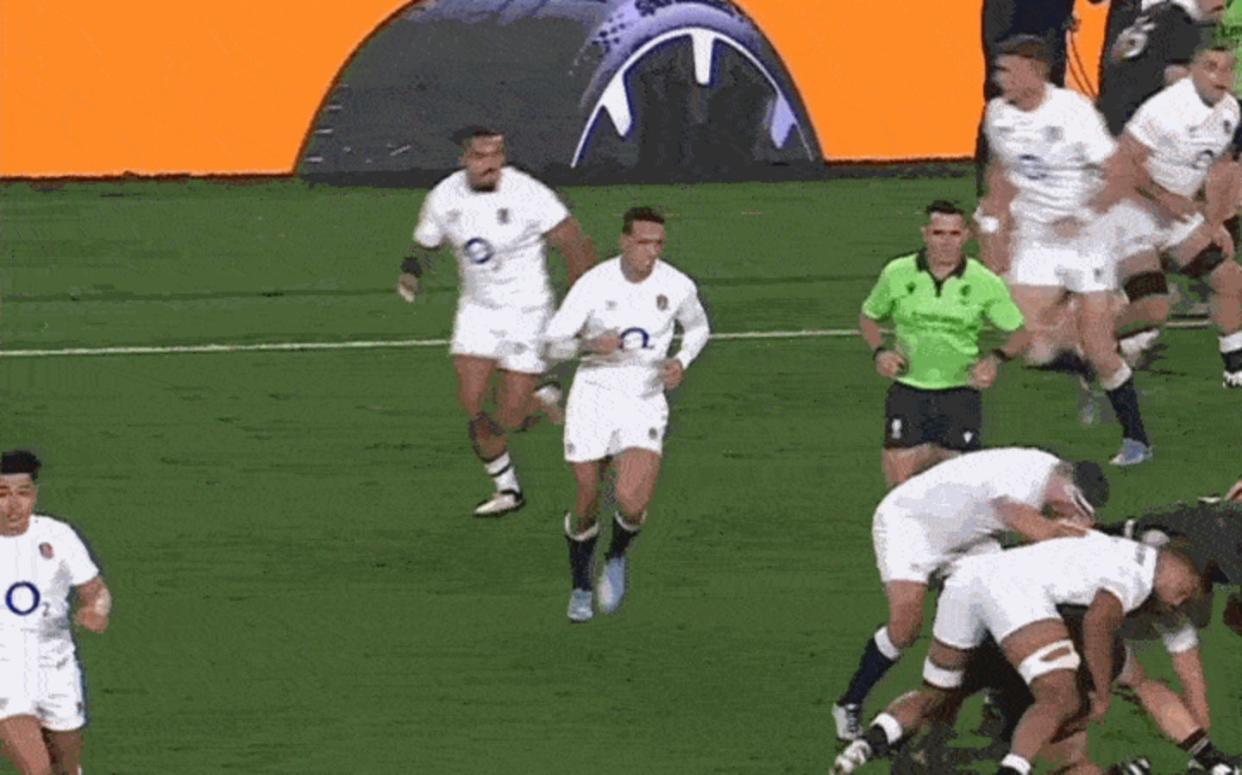
On the scoring phase, it is important that Smith is surrounded by forward runners. This keeps New Zealand’s defensive line compact, Tele’a, closest to camera, is up flat evidently expecting another carry:
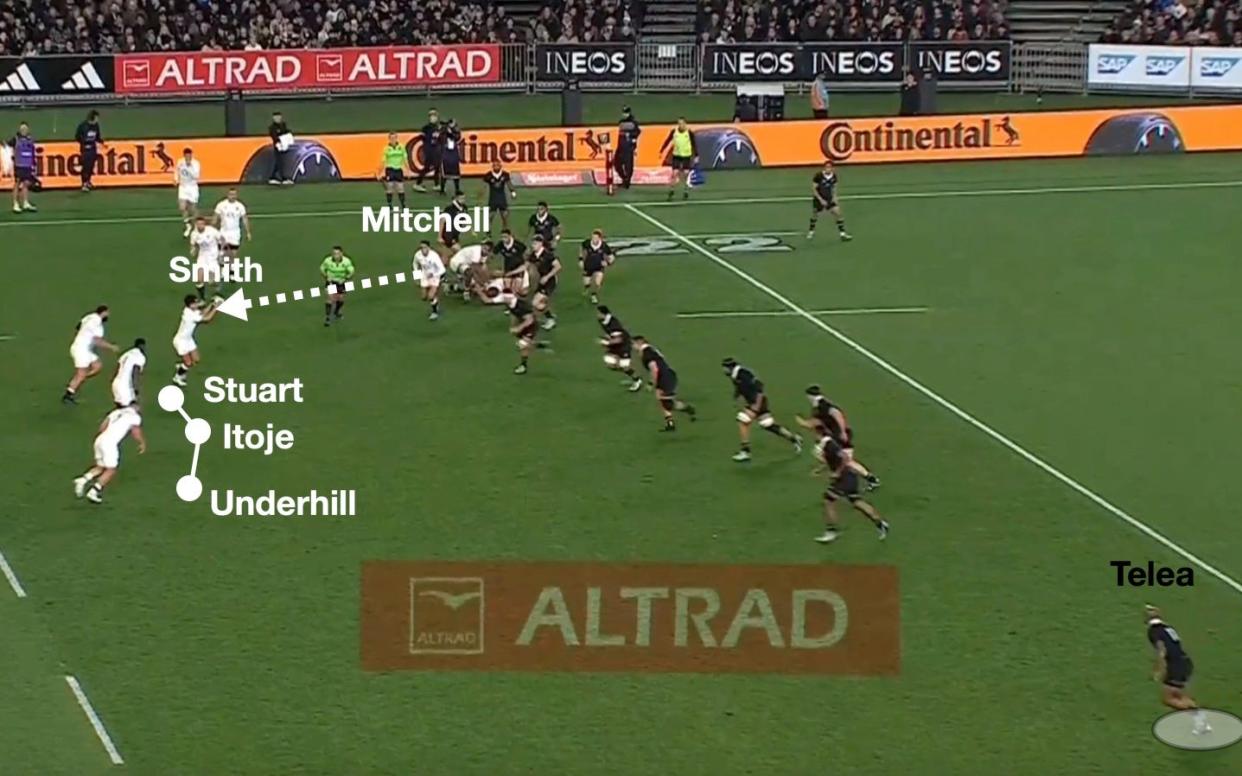
Instead, Smith nudges the ball into the space beyond Tele’a with enough height and distance for Feyi-Waboso to come onto the ball. The finish itself is exceptional. Feyi-Waboso gathers and steps off his right foot, past both a retreating Tele’a and a covering McKenzie, and keeps his balance to score:
Switching wings
Again, the second try begins some way before Freeman’s superb leap. England use the rangy Northampton Saint as a specialist chaser of restarts. Here, following McKenzie’s second penalty goal, Freeman and Feyi-Waboso have swapped wings:
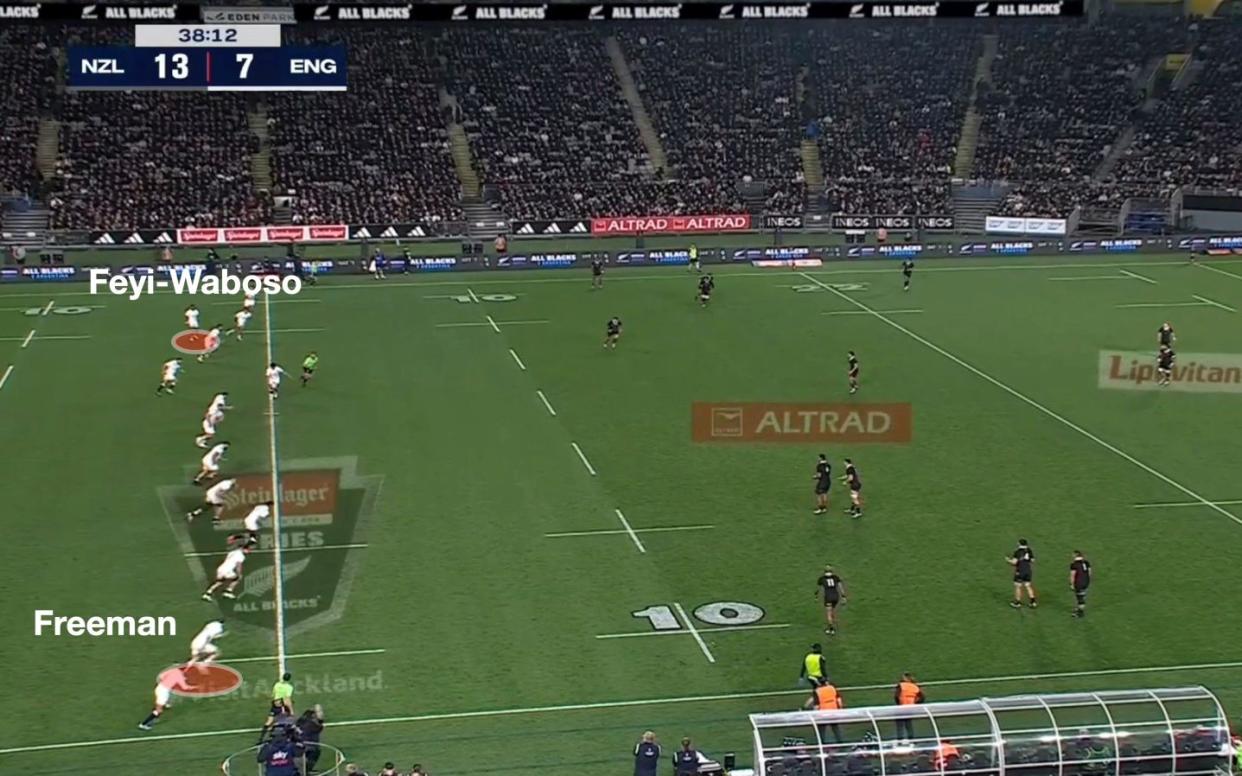
Freeman speeds through to cause confusion, and could have won an obstruction penalty out of Ethan de Groot. As it happens, Scott Barrett fumbles and Martin collects anyway:

England move across the field and Alex Mitchell probes with a grubber:
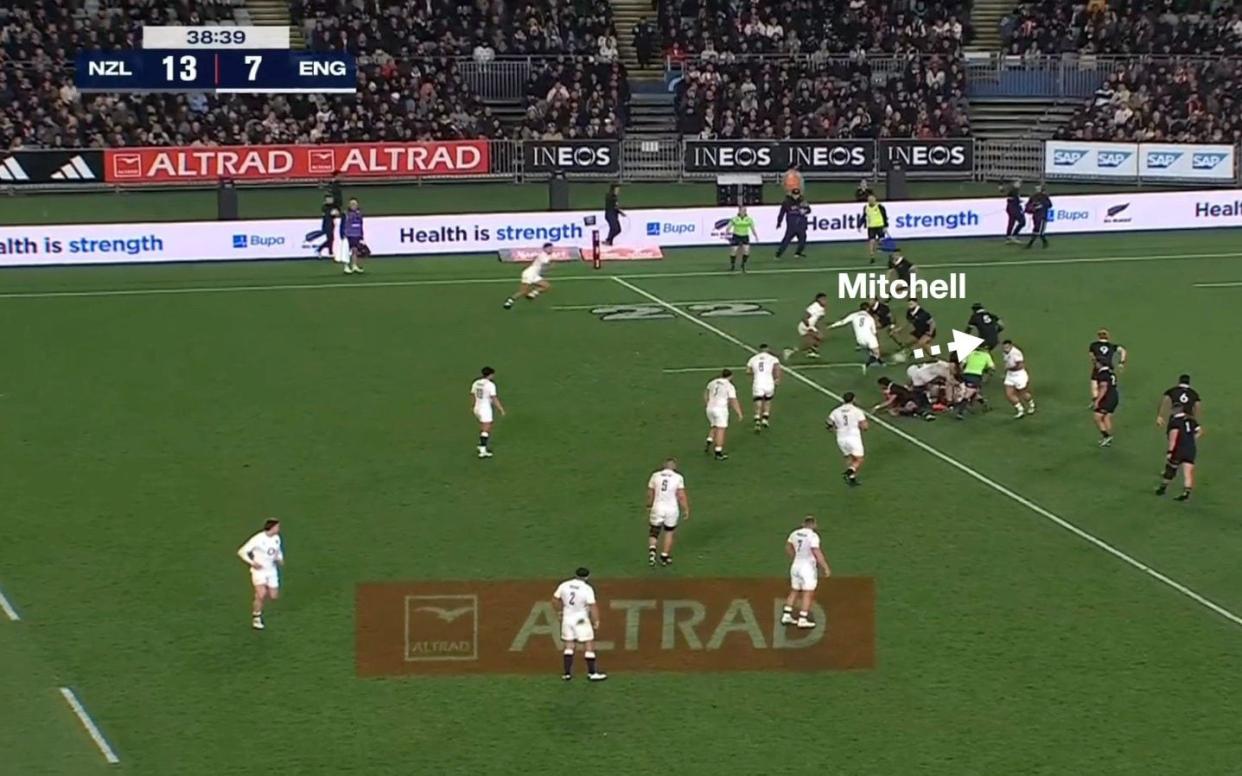
Now, this bobbled into the dead-ball area, where it was dotted down by McKenzie. And England will not have minded. They obviously relish attacking from goal-line drop-outs, because they effectively provide a set-piece platform, which is part of the reason they kick so much in the opposition half.
In this instance, McKenzie clears. You can see that Freeman has stayed on the right wing:
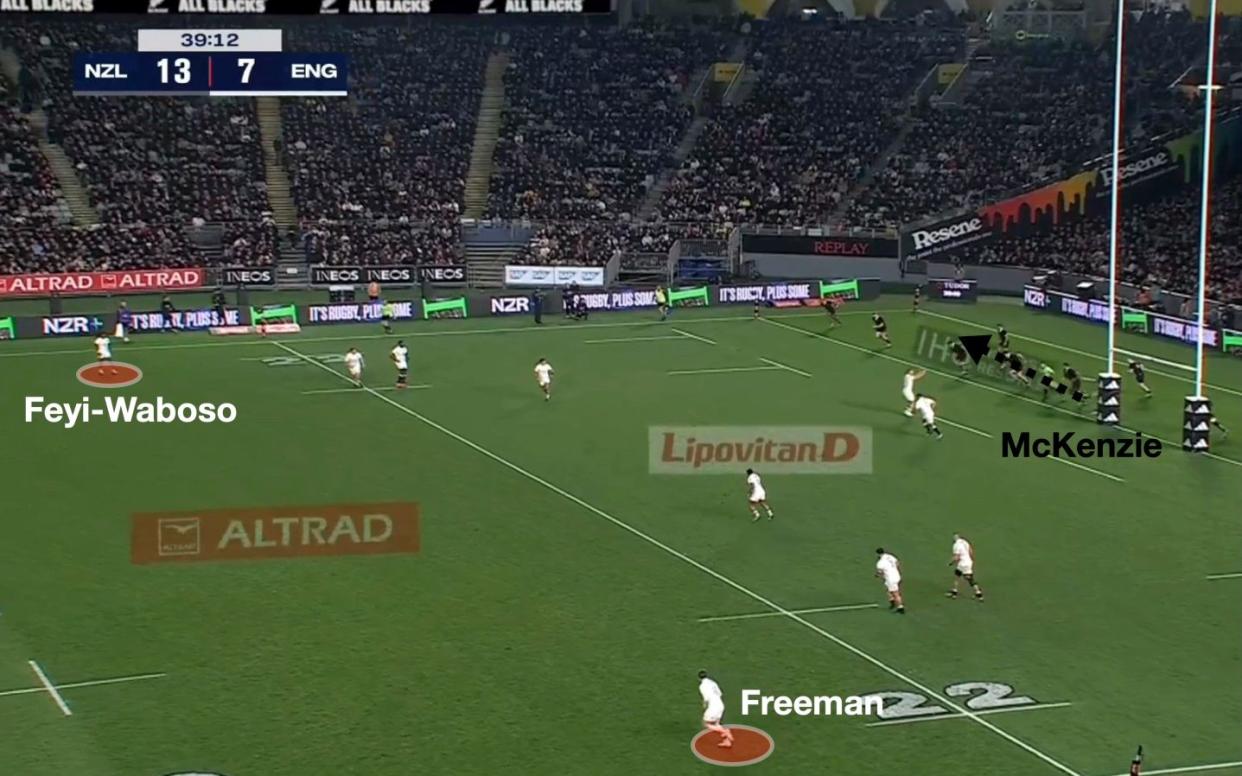
Mitchell catches in the back-field and Earl provides impetus:

A sparky sequence follows, with England obviously looking around the fringes. Mitchell snipes here…
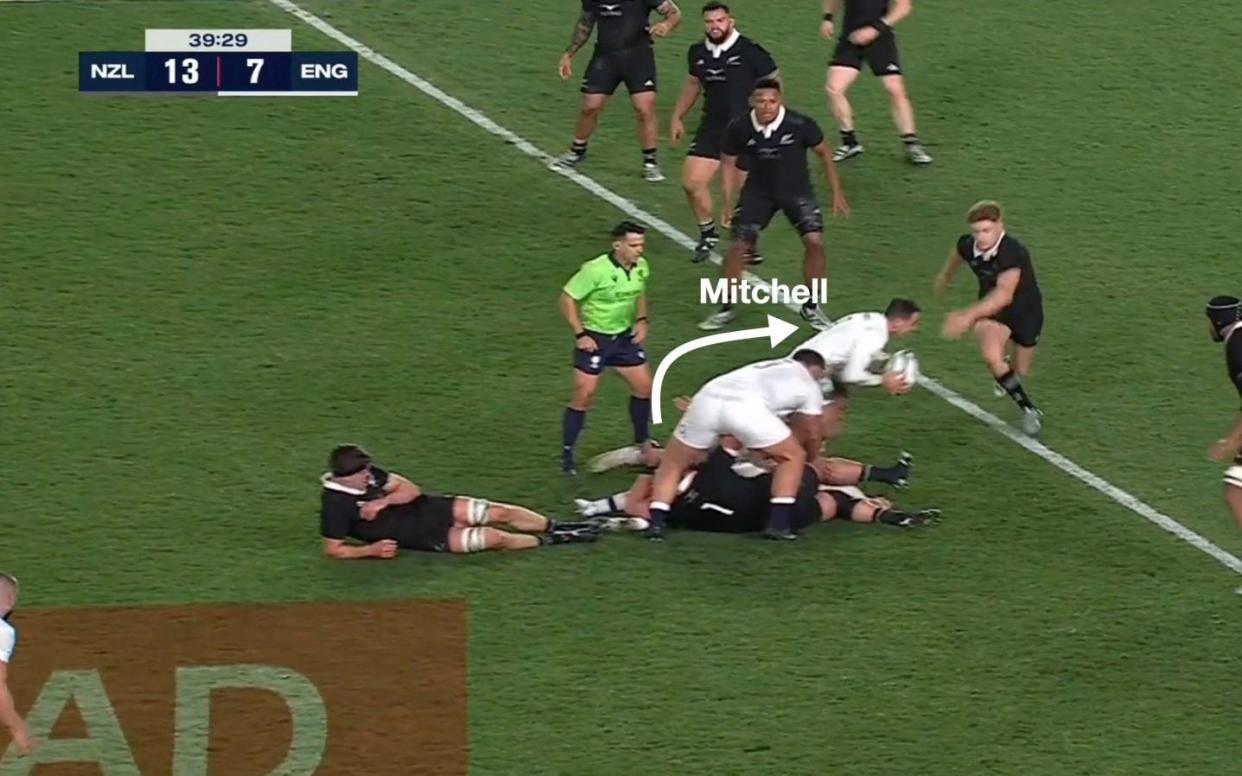
…and a few phases later, on the back of a good carry from Will Stuart, Underhill picks and goes:

Feyi-Waboso, who acts like a hole-punching wing in this attack, then gets a carry in midfield. Note that McKenzie is patrolling the back-field, and moves around to cover the outside of Stephen Perofeta on the far wing:
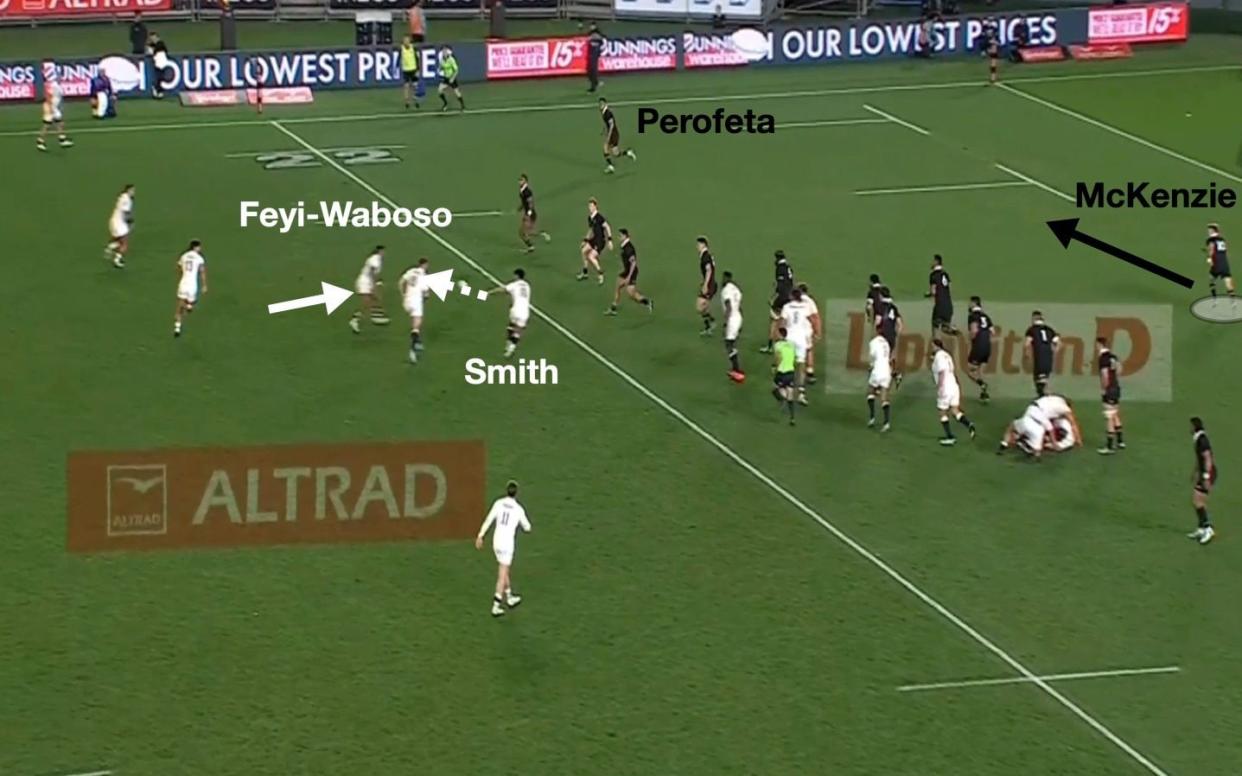
The crucial moment is Codie Taylor coming through to concede a penalty advantage, because Smith goes to the boot a phase later. Freeman must have bolted to the touchline to offer that opportunity:
Again, the flat runners on the scoring phase, which include the tireless Feyi-Waboso, are significant. McKenzie is up flat here…
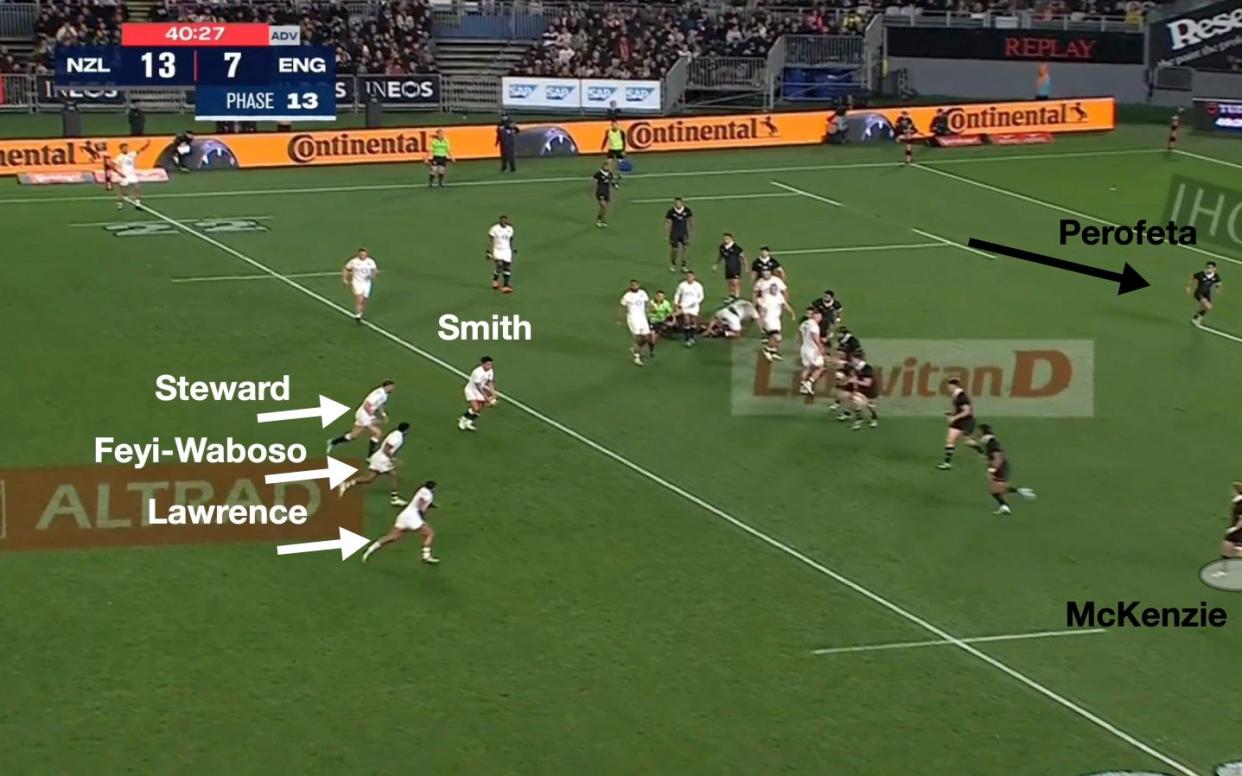
..and a more lofted kick allows Freeman to use his spring effectively:

Trajectory is vital with these attacking kicks, as we saw in the first Test. McKenzie finds Sevu Reece by sending the ball over the head of Freeman:
Had it been a higher, Freeman would have been able to turn and tackle Reece earlier than he did.
Kicking will remain an integral component of England’s game plan under Steve Borthwick, though its use may change as time goes on.
Dangers in defence and the case for balance
A kicking exchange close to the hour-mark on Saturday allowed New Zealand to go back in front after England had dominated territory for most of the third quarter. Following a clearance from Mitchell, a kick-pass from McKenzie opens up the field.
Though Smith covers across to tackle Anton Lienert-Brown…

…what happens at the next breakdown is critical. Freeman, Slade and Earl all pile in. Mitchell and Itoje end up close by as well. Freeman clearly feeds as though Jordie Barrett has come in at the side to remove him, but the upshot is that England have six players around the ruck:

Further out, Jamie George, Martin, Fin Baxter and Dan Cole are next to one another in a vulnerable defensive line:
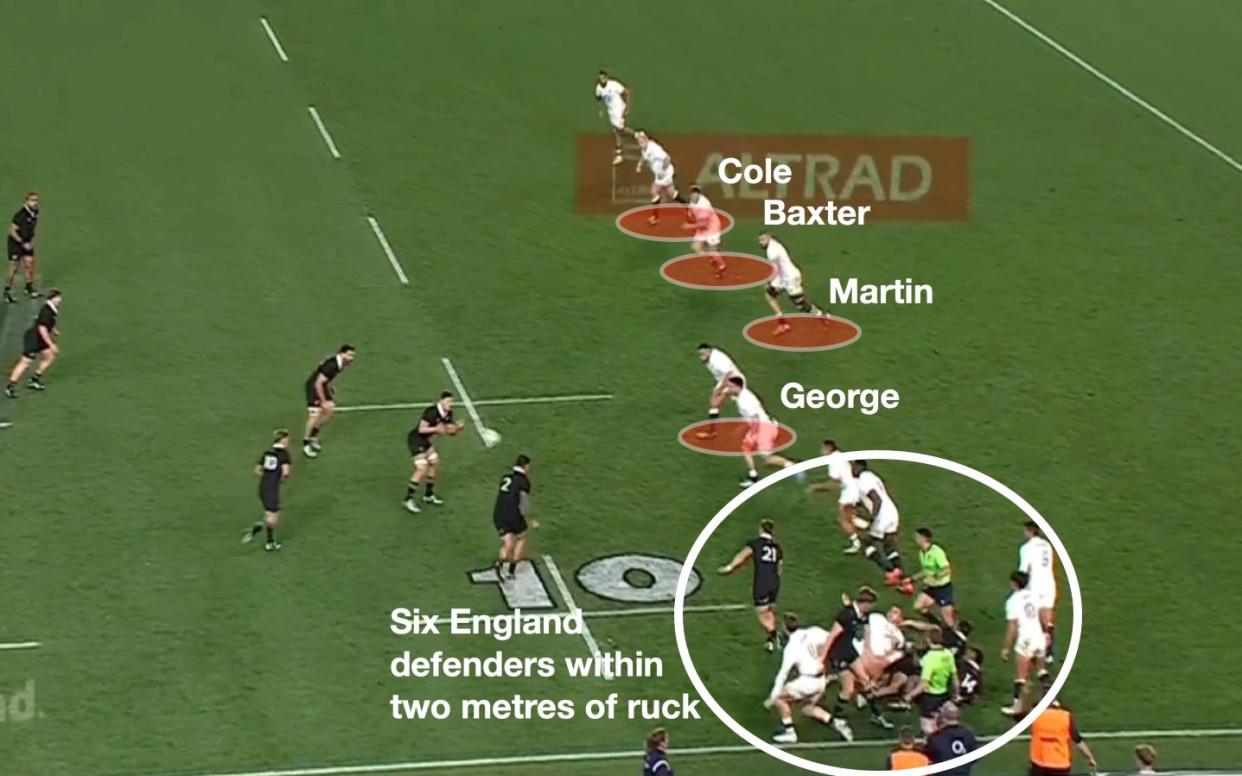
And the All Blacks pick them off:
From here, 18-17 behind, England maintained their commitment to attacking kicks. This was perhaps encouraged by New Zealand’s breakdown dominance in Dunedin, where the tourists lost eight rucks. At Eden Park, England kicked 10 times in the opposition half, up from five times at Forsyth Barr Stadium. For a comparison, New Zealand kicked seven times in the England half in the first Test and just three times in the second.
Fin Smith had a grubber fielded brilliantly by Beauden Barrett and then, from the ensuing line-out, England run a nice first-phase move. Slade pulls the ball behind Lawrence to Fin Smith and Feyi-Waboso circles around to carry:
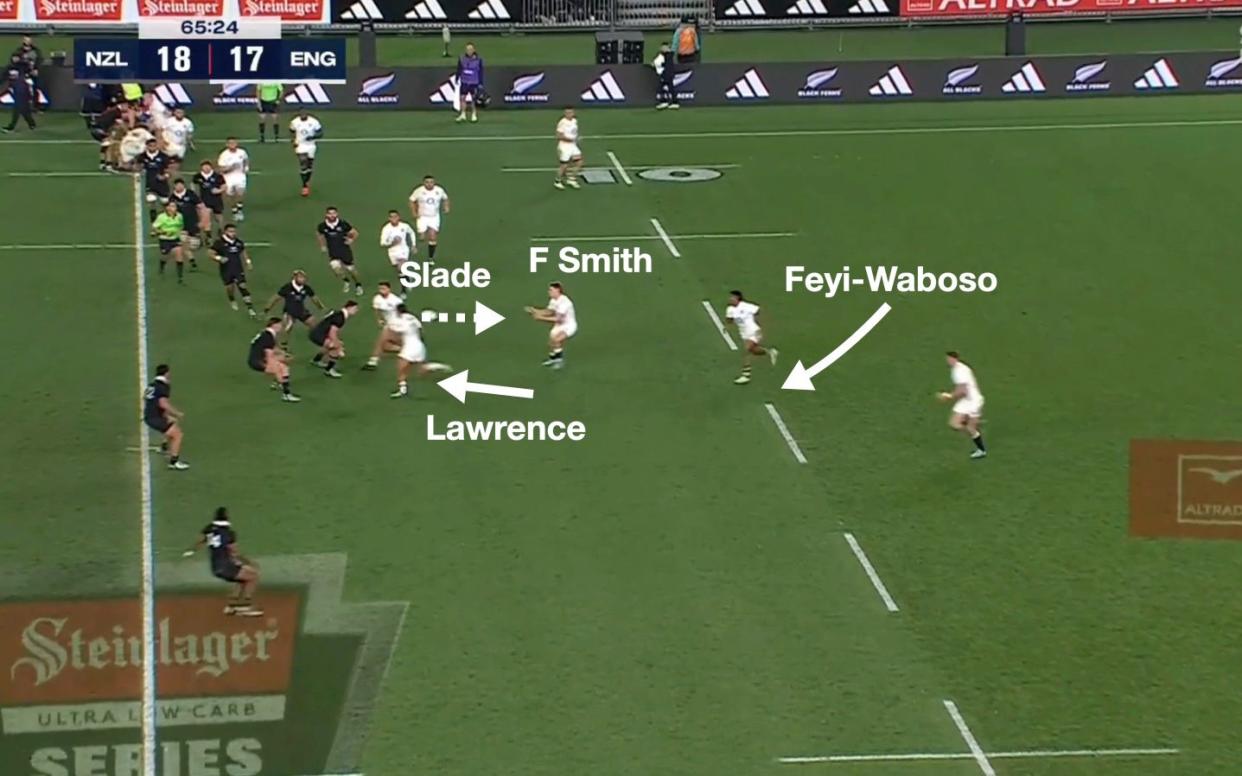
On the next phase, Mitchell bounces back and feeds Itoje, but a wrestly tackle slows the attack:

Slade must join the ruck…
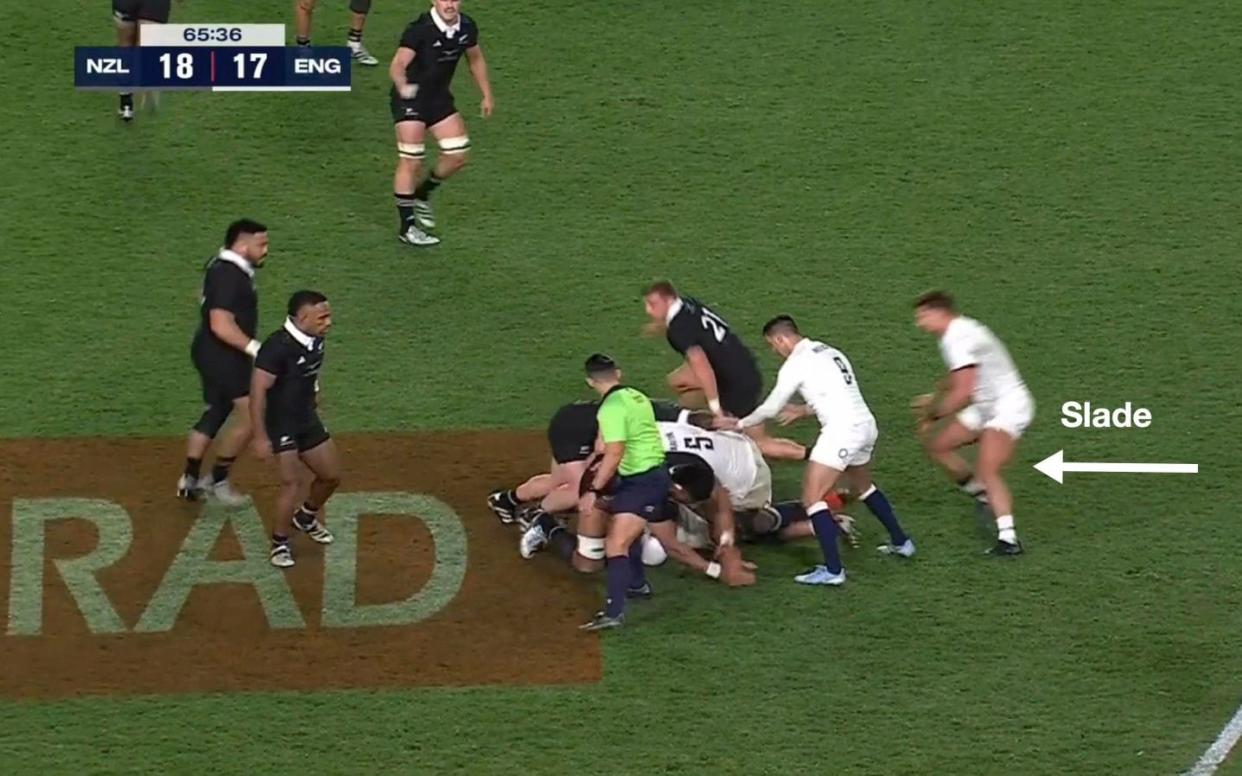
…and England have one fewer back for the next phase. Still, they are facing a defensive line with a prop, Ofa Tu’ungafasi, in its midfield:
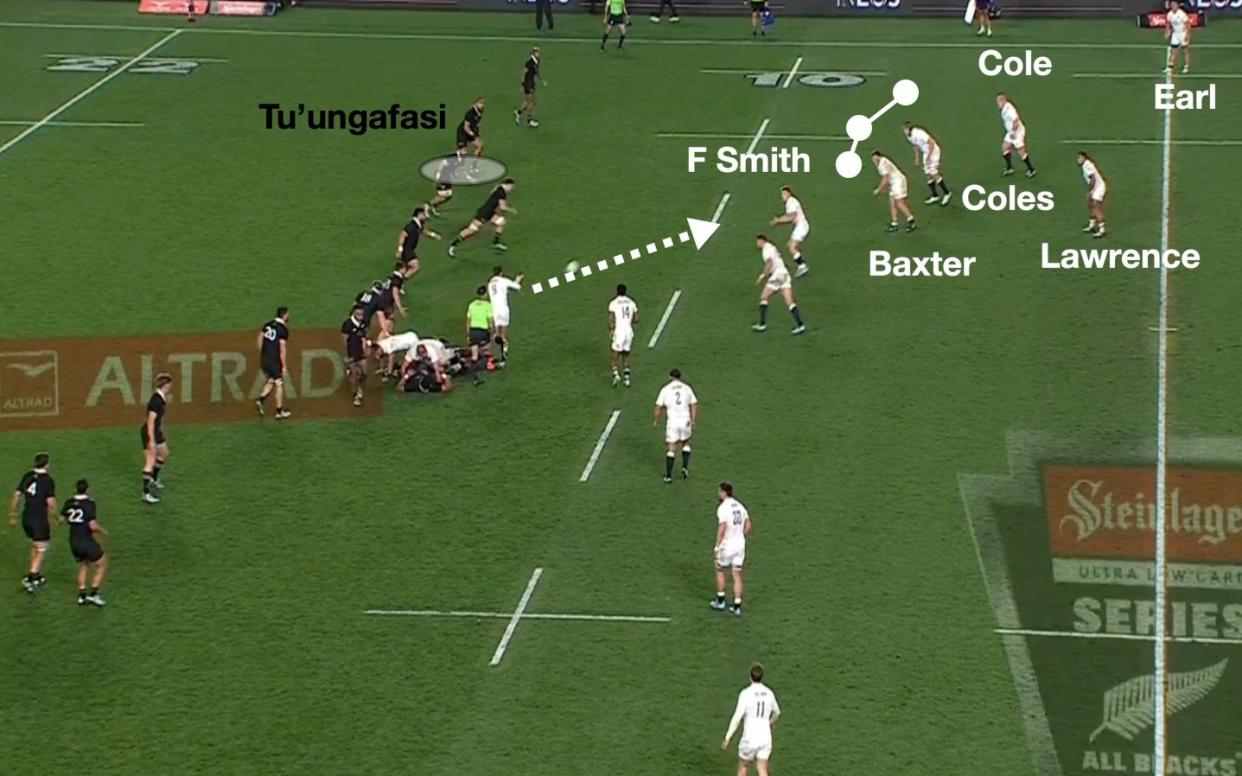
Even so, Lawrence does not look to link with Earl on the far touchline. He chips ahead, and Beauden Barrett covers again:

The next stoppage is an England scrum put-in on their own 22. Kick-passes should remain a part of England’s arsenal, but decision-making in and around the opposition 22 will be another priority for improvement when they next come together in the autumn.
The overall balance of the back line, particularly the make-up of the midfield and the identity of their full-back, is an issue to ponder, as is the inclusion of runners capable of beating tacklers in one-on-one situations. More of those players, like Ollie Sleightholme, increases the incentive to keep the ball in hand.
Borthwick will not be disheartened because the margins were extremely fine in New Zealand. That said, beating the All Blacks at Twickenham in November now feels more important.
Article courtesy of
Source link